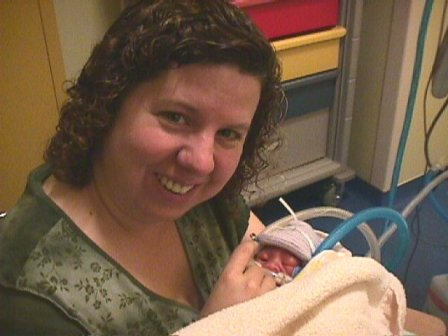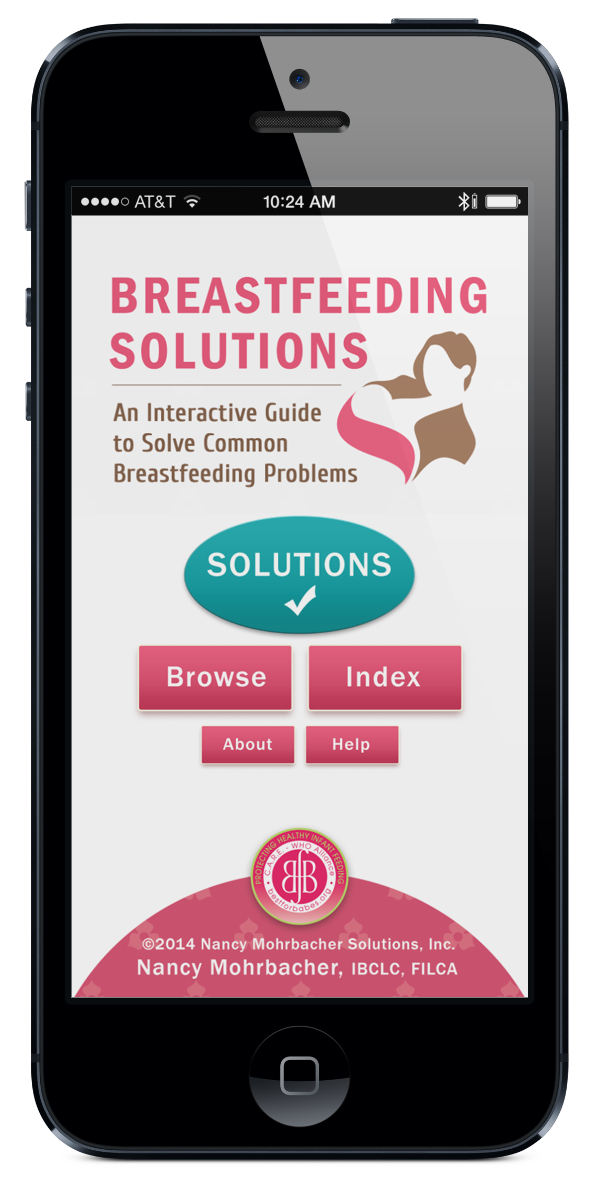November is Prematurity Awareness Month. According to the March of Dimes, premature birth is the #1 cause of death during the first month of life. Even babies born just a few weeks too soon can face serious health challenges and are at risk for lifelong disabilities, such as cerebral palsy, lung problems, and vision and hearing loss. We asked Robin Elise Weiss, CLC, LCCE and pregnancy, childbirth and breastfeeding expert at About.com, to weigh in on Prematurity Awareness Month. Robin is a proud mother of eight (!) and author of many books and articles on pregnancy, childbirth, and childcare, including The Better Way to Breastfeed.
Four Ways to Avoid the Booby Trap of Late Term Prematurity
Here’s a booby trap you can do something about . . . Late term prematurity.
Specifically speaking late term prematurity caused from elective births prior to 39 weeks gestation. Did you know that those last few weeks of pregnancy are really important to your baby? Not only is your baby’s brain rapidly growing in size, but your baby is also working hard on honing breastfeeding skills, like the ability to suck and breathe at the same time. Something as simple as being born even a few days early can be a huge barrier to a successful nursing start.
Here are four ways to avoid this booby trap:
1) Find a doctor or midwife who won’t induce your labor without a medical reason.
2) Remember that you have the right and responsibility to ask questions if induction is discussed prior to your due date.
3) Give birth in a place that has a strict policy against induction before 39 weeks or give birth at home.
4) If you need to be induced for medical reasons, insist that your baby come straight to your breast, skin to skin, just after birth.
Removing this challenge can prevent a lot of stress for babes and babies, causing a decline in the other bumps, barriers and booby traps. You and your baby deserve a healthy start!
*Update: Late term prematurity is defined as 34-36 weeks gestation. Due dates can be based on a number of factors, and babies that were estimated to be 37, 38 or 39 weeks gestation and induced can turn out to be actually 34-36 weeks gestation, putting them in the late preterm category.
Best for Babes Resources for Breastfeeding Premature Babies
Kellymom.com— Breastfeeding Your Premature Infant: Resources
La Leche League — Articles on breastfeeding premature infants and FAQs
The Rush Mother’s Milk Club — All about one of the best NICU lactation programs for premature infants directed by Paula Meier. Share this story with your NICU and fight for better breastfeeding programs for the babies who need it most!
My Whole Heart is In that Incubator — From the Motherwear Blog, a wonderful story of thriving and surviving on breastmilk.
















Recommending that a woman give birth at home is very irresponsible of you. You never know when a woman will need emergency medical help. This is the reason that years ago, women routinely died during childbirth. Shame on you, BFB.
Best for Babes is not “recommending” that a woman give birth at home, we are acknowledging studies that show that home birth can be a safer birth alternative for some pregnancies, and supporting mothers to make an informed decision about what is best for her, given her circumstances and factors. For example, I was a high-risk pregnancy and should not have given birth at home. You may be interested in this article: http://www.huffingtonpost.com/tabby-biddle/women-speak-out-about-wha_b_781205.html?ref=fb&src=sp
Shana, BFB is not recommending unattended birth. If you would like to do a little research (here’s a journal article to start you off: http://www.cmaj.ca/cgi/content/abstract/181/6-7/377), you will find significant evidence that planned, attended home birth is as safe or safer for low-risk mothers and babies than hospital birth.
Of course, one of the dozens of reasons for the safety of home birth is that homebirth midwives generally don’t pressure mothers into medically unnecessary and harmful inductions.
be careful how hard you let that knee jerk when reacting, you could hurt someone. Your assertion makes zero logical sense, particularly if you look at charts of “remaining life expectancy” after, say, age 15 or 20 across time - if women were “routinely” dying in childbirth and the vast majority of women were becoming mothers after that age, then shouldn’t the life expectancy of women compared to men have been dramaically shorter before modern medicine “rescued” us from such horror? It wasn’t. Women’s life expectancy always has been longer than men of similar age and birth cohort.
Less than 100 years ago, the majority of babies were born at home throughout the course of human history, yet somehow our species still managed to cover the planet quite well. Women “routinely dying in childbirth” would mean that few would manage to have large families, yet large numbers of births per woman (but not necessarily large percentages of children surviving to adulthood) was and is the norm in much of the world, particularly where birth is more likely to happen outside the hospital. Malnutrition, disease (especially rickets, which caused deformed pelvises in women just before births started occuring more in hospitals and was directly caused by social factors around the industrial revolution), and other foreknowable features can make birth less safe, regardless of where it happens. In countries (and US states that license midwives for out-of-hospital births) where transfer from home to hospital when necessary is a smooth process, home is significantly safer for birth than hospital (you will need to read medical journals and texts other than those produced by ACOG and AMA in order to learn this though). Many of the “sudden emergencies” that happen in birth are, in fact, caused by people sticking their fingers (or IVS) where they don’t belong, NOT by the natural process of birth itself.
Don’t believe me? That’s your choice. Do ask yourself who profits from which mindset though - medically managed births are profitable for hospitals and doctors (and often lawyers). Physiologically normal birth is generally only really profitable to the mother and child, mildly so for the midwife (her pay per hour for the care she provides over the course of the pregnancy, which is usually covered by a set fee, sometimes barely squeaks over twice minimum wage particularly in longer labors, no one becomes a midwife expecting to earn upper-middle-class income off it like doctors generally expect)
Wow! I was not expecting to find an anti-homebirth response here, though I suppose I shouldn’t be surprised. Shana, while your opinion is a commonly held one, it is not evidence based. While this post focuses on infant mortality related to prematurity, “the death rate of women giving birth in the US is worse than in 40 other countries, including nearly all the industrialised countries” ( http://www.guardian.co.uk/world/2010/mar/12/amnesty-us-maternal-mortality-rates ). Stats for infant mortality are fairly similar.
Most US births occur in hospitals, where as in many of the other industrialized countries (particularly European countries) with better outcomes, home birth is still quite common with hospital births and OBs often being reserved for those women with high risk pregancies who require the extra medical care. The high level of intervention that occurs during hospital deliveries in the US has a negative impact on both maternal and infant outcomes. There are many other factors that influence the high mortality rate in the US as well (poverty, access to care, discrimination, high c-section rate, etc), but homebirth is not one of them.
If you check out the study “A Thoughtful Birth” linked to, you’ll see that planned, midwife attended home births were as safe and have maternal and infant outcomes that are as good as planned hospital births (in many cases the outcomes were better for home birth, though not statistically significantly so).
Please educate yourself before claiming that anyone’s suggestions might be “irresponsible”.
For more information, check out these links:
http://kimmelin.wordpress.com/2010/07/09/the-debate-goes-on-homebirth-vs-hospital-birth/
http://hoydenabouttown.com/20090902.6454/canadian-study-finds-mothers-babies-much-less-likely-to-be-injured-in-homebirth/ (discussion re: Canadian study)
How does this work for babies who are naturally born between 36-39 weeks? And by naturally I mean, mom goes into labor without being induced.
JJ, due dates aren’t exact (even if the conception date is known), and some of the triggers for spontaneous labor actually come from the baby’s development, so babies who are born spontaneously between 36-39 weeks are usually ready to be born.
I suspect that this is actually where a lot of confusion arises, which keeps women and OBs unaware of how dangerous elective induction can be. A baby is usually full-term at 37 weeks if the pregnancy is healthy and labor just starts on its own at that time, so medical textbooks and training say that 37-40 weeks is full-term. But the baby next door can be up to five weeks early (yikes!) if s/he is forced from the womb at 37 weeks via induction.
Shana, I believe you are undereducated in regards to home birth. You should do your research before shaming BFB for a legitimate suggestion.
thanks for such a helpful tips it really helps me when i will plan for family….